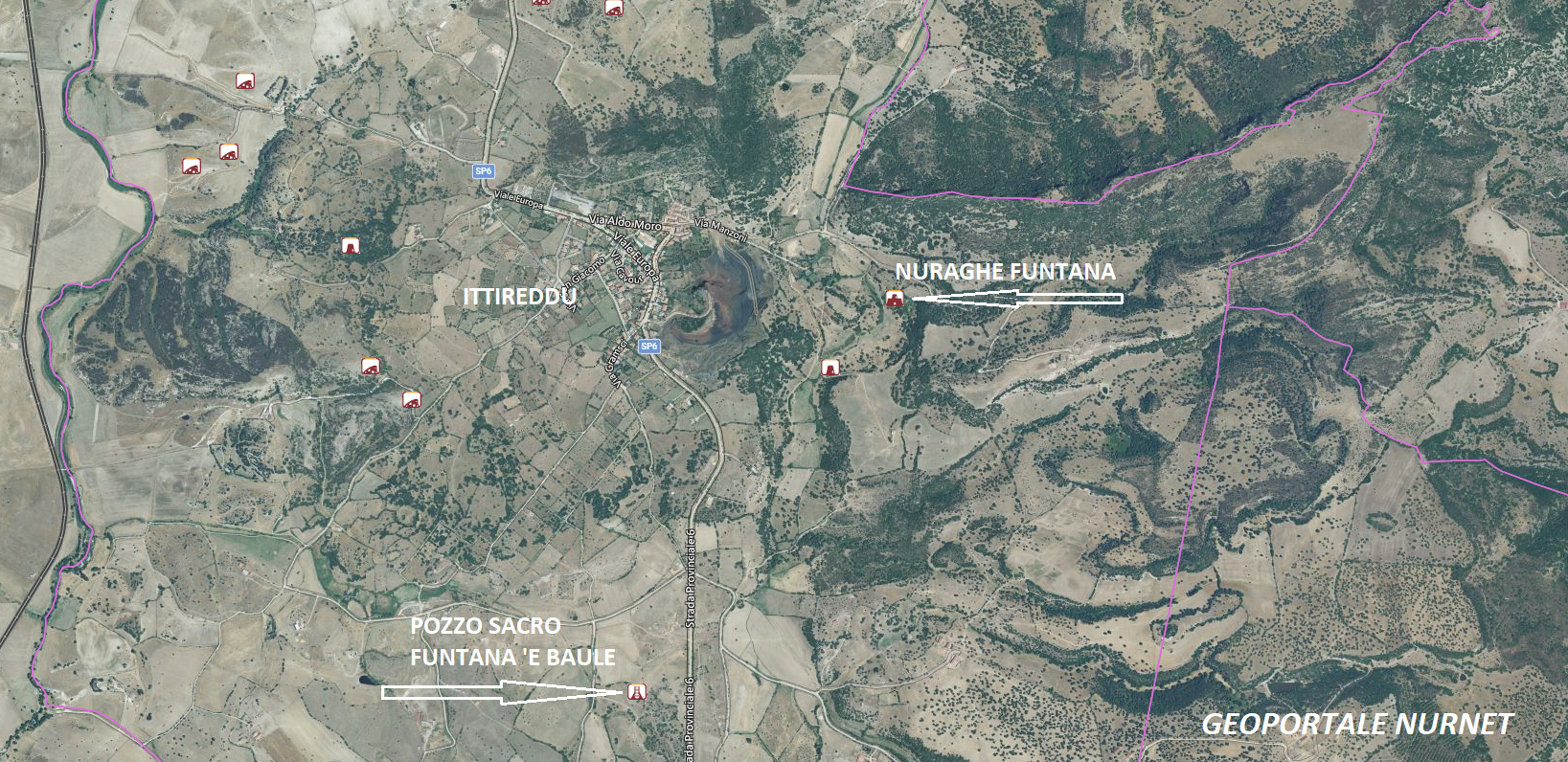The nuraghe Funtana, located in Ittireddu, “is about 1 km Southeast of the inhabited center and can be reached via a municipal road that crosses a small bridge over the Rio Calarighes while passing through Funtana ‘e Josso. The monument, built with irregular rows of trachytic blocks, is a complex nuraghe consisting of a main tower to which, in later periods, two side towers and a revetment wall were added, which delineated a small rectangular courtyard in front of the entrance. The central tower, which can no longer be accessed directly but only through the NE tower, has an entrance oriented to the SE, topped by a strong lintel surmounted by a discharge window. This entrance leads into a corridor more than 4 meters long covered by a flat ceiling made of four slabs. Between the ceiling and the walls, some pieces of cork were inserted during construction, still perfectly preserved today, likely to ensure elasticity in movements due to thermal excursions… The entire structure rests on a foundation made of a vespaio more than a meter high, composed of small and medium-sized stones. In the area surrounding the nuraghe, faint traces of some huts can be identified…”
Also in the territory of Ittireddu, to reach the sacred spring of Funtana ‘e Baule, “to the right of the Provincial Ittireddu-Bono road, about 2 km from Ittireddu, a short natural path is taken and traveled for a few dozen meters. The monument, which utilizes a spring of water, is built from roughly worked trachite blocks at the top, while the masonry of the lower part consists of regular courses of rectangular blocks. A short dromos (width 1.48 m; length 0.80 m), originally paved, preceded the trapezoidal well chamber, covered (partially collapsed today) with flat slabs sloping towards the bottom, topped by a mound of stones and earth. A small staircase of five steps starts from the threshold, bordered by two jambs, and leads to the base of the well, which is also trapezoidal in shape, 1.70 m deep.”
The excerpts, edited by Francesco Galli, are taken from the booklet “il Museo e il Territorio” (Collection “Sardegna Archeologica” – Carlo Delfino Editore)
The photos of nuraghe Funtana or Sa Funtana are by Nicola Castangia and Maurizio Cossu. Those of the sacred spring Funtana ‘e Baule are by Nicola Castangia and Giovanni Sotgiu.










